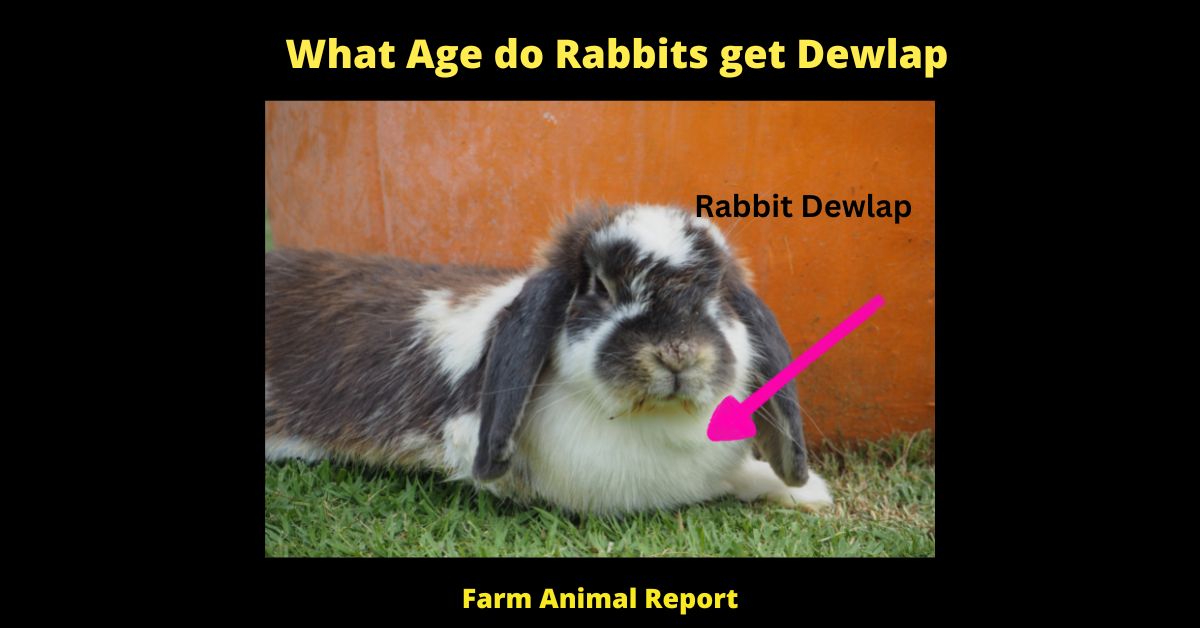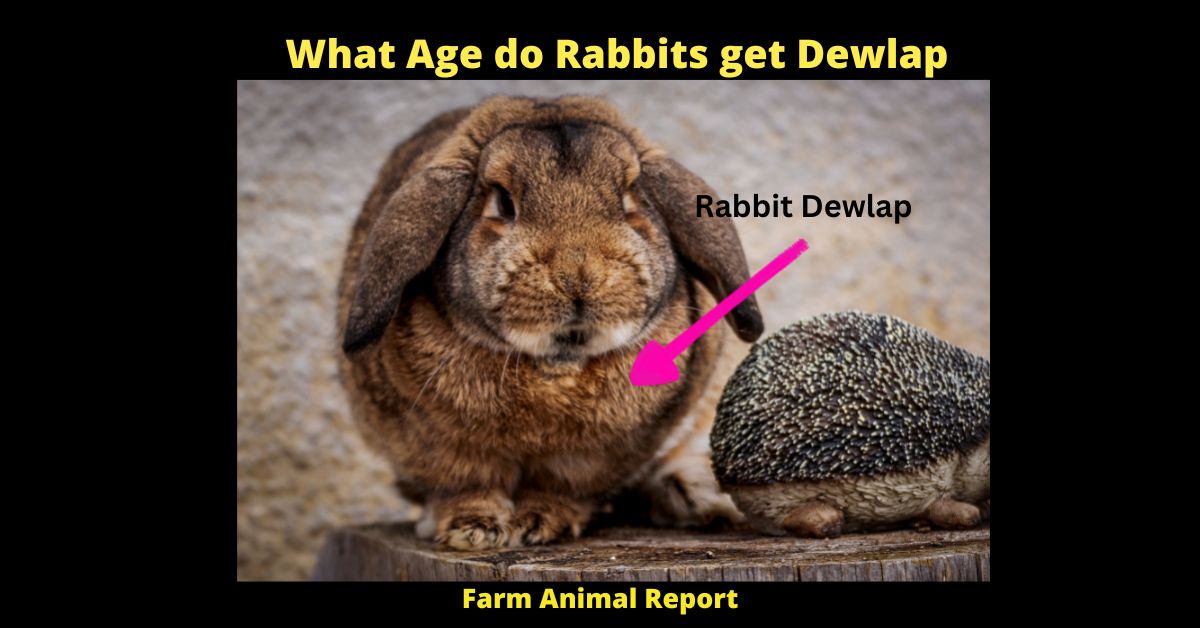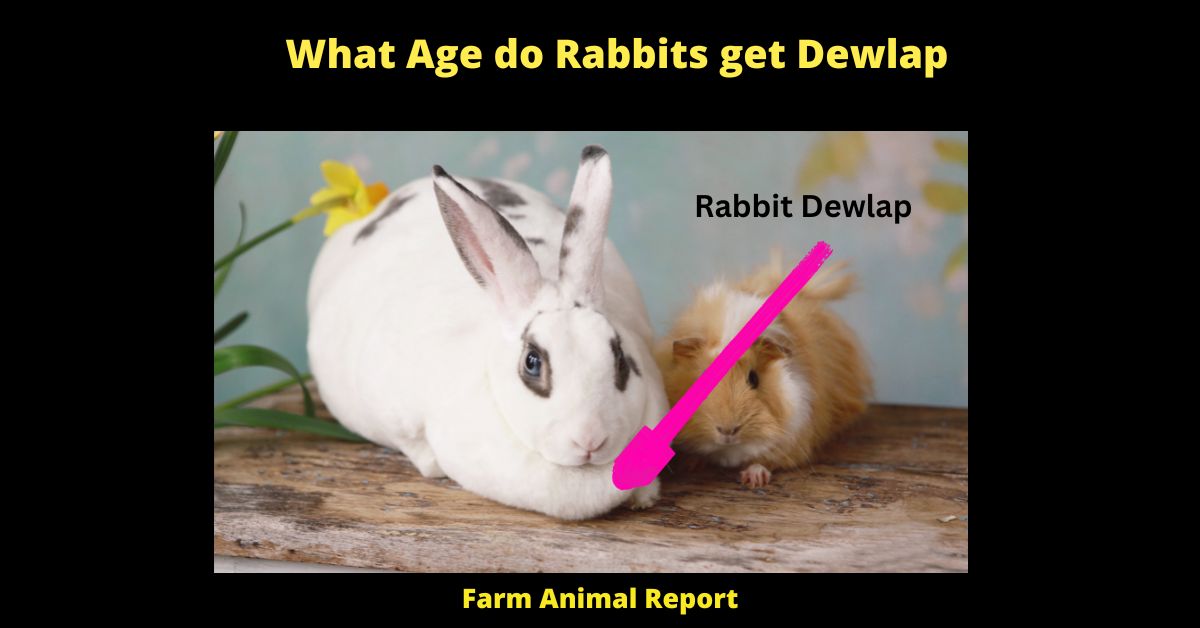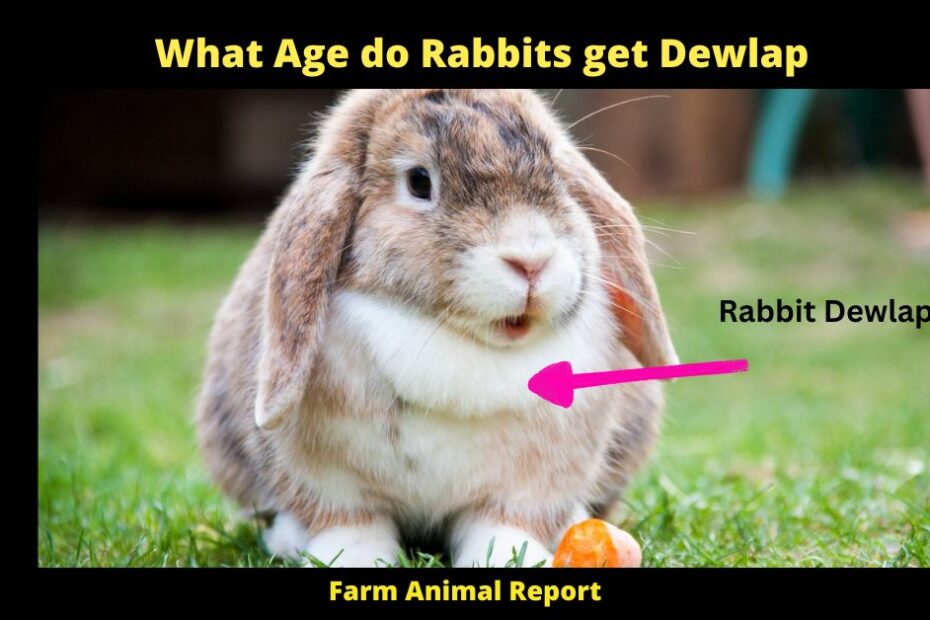What Age do Rabbits get Dewlap – As a General Rule it’s generally believed that rabbits reach their full adult size by around 4 to 6 months old. At this point, they may start to develop a dewlap, although it may not be fully visible until they’re 12 months old or older. A Dewlap can be Small – Medium – Large in size. Female Rabbits that have been spayed early tend not to develop dewlaps
In general, larger breeds of rabbits are more likely to develop a pronounced dewlap than smaller breeds. However, there are exceptions to every rule, so it’s best to ask your veterinarian if you’re concerned about your rabbit’s development. Whether or not your rabbit has a dewlap, it’s important to provide plenty of fresh hay, vegetables, and water to ensure a long and healthy life.
What Age do Rabbits get Dewlap?
All About Dewlaps in Rabbits
A dewlap is a piece of extra skin that hangs down from the lower jaw of a rabbit. Not all rabbits have dewlaps, but many do. Here’s everything you need to know about dewlaps in rabbits, including when they develop and why some rabbits have them while others don’t.
What is a Dewlap?
A dewlap is a piece of extra skin that hangs down from the lower jaw of a rabbit. It’s sometimes also called a wattle. Dewlaps can be large or small, and they can be bare or covered in fur. Some rabbits have very noticeable dewlaps, while others have only small ones. Not all rabbits have dewlaps, but many do.
A dewlap is a flap of skin that hangs from the lower jaw of some animals, especially rabbits. The dewlap serves several purposes, including thermoregulation and communication. When a rabbit is heated, blood vessels in the dewlap dilate, allowing heat to escape and helping the animal to cool down. The dewlap can also be used to send visual signals.
For example, a white rabbit with a black dewlap is warning potential predators that it is poisoned. In addition, the dewlap can be used to store fat reserves, providing the rabbit with energy in times of scarcity. Dewlaps vary in size and shape from species to species, but they all serve the same basic purpose: to help the rabbit stay cool, safe, and well-nourished.

5 Reasons that Rabbits have Dewlaps
A dewlap is a fold of skin that hangs down from the lower jaw of some animals, notably rabbits. While dewlaps serve no apparent purpose in modern rabbits, they may have evolved for a variety of reasons. Here are five possible explanations for why rabbits have dewlaps:
1) Dewlaps help rabbits to regulate their body temperature. The skin on a rabbit’s dewlap is very thin and contains a large number of blood vessels. This allows the rabbit to pant, which helps to evaporate moisture and cool the blood.
2) Dewlaps help rabbits to stay hydrated. The skin on a rabbit’s dewlap is very sensitive to changes in humidity. When the air is dry, the dewlap will swell up with moisture, which the rabbit can then lick off and consume.
3) Dewlaps help rabbits to communicate. The skin on a rabbit’s dewlap is very expressive, and can be used to communicate a variety of emotions, from excitement to aggressiveness.
4) Dewlaps help rabbits to groom themselves. The long hairs on a rabbit’s dewlap act like a brush, allowing the rabbit to reach places that it would otherwise be unable to groom, such as its back and hindquarters.
5) Dewlaps may be a vestigial remnant of a more primitive anatomy. In many older breeds of rabbits, the dewlap is much larger and more pronounced than in modern breeds. It is possible that the dewlap is a vestigial remnant of an anatomical structure that was once used for thermoregulation or communication but is no longer needed due to changes in the environment or lifestyle of rabbits.
When Do Rabbits Get Dewlaps?
Dewlaps usually develop when rabbits reach adulthood, though some baby rabbits are born with them. If you’re not sure if your rabbit has a dewlap, look for it when your rabbit is relaxed and not moving around too much. It’s often easiest to see a rabbit’s dewlap when they’re lying down or grooming themselves.
Why Do Some Rabbits Have Dewlaps While Others Don’t?
The jury is still out on why some rabbits have dewlaps while others don’t. It’s possible that dewlaps are simply a genetic trait, and that some rabbits are simply more likely to have them than others. However, it’s also possible that diet plays a role in the development of dewlaps. If your rabbit doesn’t have a dewlap and you’d like them to grow one, speak to your veterinarian about changing their diet.
Are some Rabbits (Bunnies) Breeds more common to have Dewlap
Some rabbit breeds are more likely to have a dewlap than others. The reigning champion is the Flemish Giant, which is nearly guaranteed to have a dewlap. Other breeds that commonly have a dewlap include the Belgian Hare, French Lop, and English Lop.
However, even within these breeds, there can be considerable variation. Some rabbits will have a very pronounced dewlap, while others will have only a small flap of skin. In some cases, the dewlap may be barely noticeable. Ultimately, whether or not a rabbit has a dewlap is largely determined by genetics.
Dewlaps are a common physical trait in rabbits, but not all rabbits have them. So what factors influence whether a rabbit gets a dewlap? It turns out that there are a few different factors that can play a role.
First, dewlaps are more common in larger breeds of rabbits. This is likely because bigger rabbits have more loose skin around their necks, which makes it more likely for a dewlap to develop.
Second, the climate can also play a role. In warm climates, where there is less need for insulation, rabbits are less likely to develop dewlaps.

Finally, diet can also be a factor. Rabbits that eat high-fiber foods are more likely to develop dewlaps, since the extra fiber helps to fill out the skin around the neck. So if you’re wondering why your rabbit has a dewlap, it could be due to any of these factors.
Do All Female Rabbits Have Dewlaps?
No, not all female rabbits have dewlaps. Just as with human beings, the presence of physical traits like dewlaps is determined by genetics rather than gender. So, whether or not a particular rabbit has a dewlap has nothing to do with whether they’re male or female.
5 Steps to help Yor Rabbit Loose its Delap
As any pet owner knows, rabbits are notoriously clean animals. In the wild, they spend a great deal of time grooming themselves and their furry companions. Unfortunately, pet rabbits often do not have the same opportunity to keep themselves clean.
As a result, they can become matted and may even develop mats under their chin, which can cause health problems. The good news is that there are steps you can take to help your rabbit stay clean and healthy. Here are five tips for keeping your rabbit well-groomed:
1. Provide plenty of hay. Hay is an essential part of a rabbit’s diet, and it also helps to keep their teeth healthy. However, it also has another important purpose – it helps to keep your rabbit’s fur clean and free of mats. Make sure to provide fresh hay on a daily basis.
2. Brush your rabbit regularly. rabbits shed their fur constantly, so it’s important to brush them regularly to help prevent mats from forming. A soft bristled brush is best for most rabbits, but you may need to experiment to find the right brush for your bunny.
3. Give your rabbit a bath. Yes, you read that correctly – rabbits actually enjoy taking baths! Bathing your rabbit once or twice a month will help to keep their fur clean and free of mats. Be sure to use a mild shampoo specifically designed for rabbits, and avoid getting water in their eyes or ears.
4. Trim your rabbit’s nails. Like all animals, rabbits’ nails need to be trimmed on a regular basis.If they get too long, they can become entangled in the fur, which can lead to mats forming. A professional groomer can do this for you, or you can learn how to do it yourself with a little practice.
5. Keep an eye on your rabbit’s diet. A healthy diet is essential for all animals, but it’s especially important for rabbits since they are prone to developing gastrointestinal issues. Make sure to provide plenty of fresh vegetables and water, and avoid giving them sugary snacks or processed foods as these can lead to health problems down the road. By following these simple tips, you can help keep your rabbit’s fur clean and mat-free!
What is the Difference Of a Rabbits Dewlap and a Rabbits Skirt
Dewlap
Most rabbits have a dewlap, which is a loose fold of skin that hangs down from the lower jaw. The dewlap serves several purposes, including keeping the face clean and protecting the neck from predators.
Skirt
Some rabbits also have a “skirt” of fur around their hindquarters. This extra fur helps to keep the rabbit warm and can also be used to make the rabbit look larger and more threatening to predators. Skirts are most common in wild rabbits, though some domestic breeds also have them. Ultimately, the dewlap and skirt are both adaptations that help rabbits to survive in the wild.

Final Thoughts – What Age do Rabbits get a Dewlap
Dewlaps are pieces of extra skin that hang down from the lower jaw of some rabbits. Not all rabbits have dewlaps, but many do. If you’re not sure if your rabbit has a dewlap, look for it when your rabbit is relaxed and not moving around too much. The jury is still out on why some rabbits have dewlaps while others don’t, but it’s possible that genetics play a role. Regardless of why they have them, most rabbits with dewlaps seem to enjoy showing them off!
God Bless Greg





